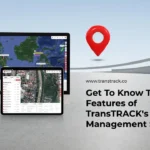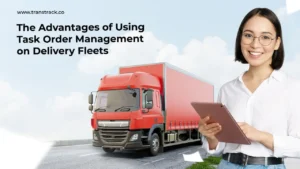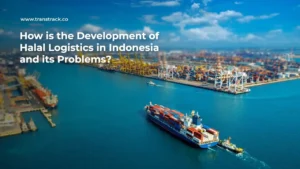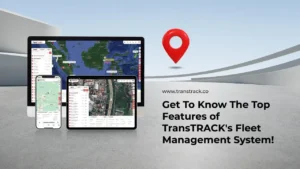Revolutionizing E-commerce Efficiency with Warehouse Automation in 2024
Posted on August 16, 2024 by Nur Wachda Mihmidati

Amid the rapid development of technology, warehouse automation is increasingly becoming a key factor in the industrial revolution in Southeast Asia. By 2024, the region’s warehouse automation market size is estimated at USD 0.72 billion and is predicted to surge to USD 1.31 billion by 2029. This growth reflects an impressive rate of development with a compound annual growth rate (CAGR) of 12.51% over the projection period 2024-2029 (Mordor Intelligence, 2024). This data shows that investment in warehouse automation is not just a trend, but also a crucial strategic move to improve efficiency, especially in the growing e-commerce industry.
Indonesia e-Commerce Logistics and Warehouse Market
The logistics and warehousing market in Indonesia is currently experiencing a significant surge, in line with the rapid growth of the digital economy and the booming e-commerce industry. This growth has been particularly pronounced in recent years, reflecting the increasing demand for efficient transportation, storage, and warehousing solutions. Based on data from the National Development Planning Agency (Bappenas), logistics costs for domestic and export activities accounted for approximately 23.27% of GDP in 2023. Although slightly down from around 23.5% in 2022 and 2021, this figure demonstrates the strength and resilience of Indonesia’s warehousing market.
The rise of e-commerce and the digital economy has triggered a surge in demand for logistics services, particularly in last-mile delivery and warehousing, making the logistics and warehousing market in Indonesia highly competitive. To meet this demand, companies are increasingly investing in technology and infrastructure to improve efficiency and reduce costs. This includes the adoption of digital platforms for shipment tracking and management, as well as the development of new warehousing facilities in strategic locations across Indonesia. With the government’s renewed focus on infrastructure development and digital transformation of the industry, the future of Indonesia’s logistics and warehousing market looks bright and full of potential.
Indonesia Expected to Have Significant Market Share
Indonesia’s logistics vision for 2025 is “locally integrated, globally connected,” which is in line with the transformation of the national logistics system towards Logistics 4.0. The main goal of this vision is to connect and integrate the domestic distribution system thoroughly across the country. The pandemic has had a significant negative impact on supply and demand patterns in international trade. To address this challenge, the concept of “Smart Logistics 4.0” was developed to modernize logistics-based technologies, which in turn improves the trade process between vendors, logistics services, and end consumers.
As the number of users in Indonesia’s e-commerce market is expected to grow by 2023, the demand for warehouse automation is expected to rise. Indonesia’s e-commerce market has experienced steady user growth in recent years. The demand for digital commerce continues to increase as consumers’ shopping habits shift to online platforms. With more and more consumers using smartphones and tablets to shop, one of the key market trends is the widespread use of mobile commerce.
Indonesia also records one of the highest e-commerce adoption rates in the world. Indonesia’s e-commerce market value increased to USD 43 billion in 2021, making it the ninth largest e-commerce market in the world. Online sales in Indonesia’s fast-growing e-commerce market grew by 23%, with approximately 63 million new users added. Around 90% of the country’s internet users, aged between 16 and 64, have made online purchases. Changing consumer behavior that increasingly prioritizes convenience and is willing to pay more is driving the growth of the e-commerce market in Indonesia. With a vibrant young population, growing internet penetration, an explosion of e-wallets, and policies that support the digital economy, the future of Indonesia’s e-commerce market looks bright and full of potential.
Realization of Logistics Industry Growth in Indonesia
Indonesia’s logistics industry has significant growth potential, projected to reach USD 156 million by 2023 with the adoption of advanced digital technologies. Key players like TransTRACK are leading this change with a comprehensive suite of logistics management solutions.
TransTRACK offers a range of innovative solutions designed specifically for the logistics sector:
Fleet Management System (FMS)
This system enables real-time monitoring and management of vehicle fleets. According to Teletrac Navman, the implementation of FMS can reduce fuel consumption by 15-20% with route optimization and driver behavior monitoring, and reduce fleet operating costs by 30%.
Logistic Service Integrator (LSI)
LSI serves as an integration center for different logistics services to streamline operations. LSI implementation can reduce logistics cycle time by up to 25% and increase productivity by 20-30% due to more coordinated processes and less disruption.
Transportation Management System (TMS)
TMS allows companies to plan, execute, and optimize the physical movement of goods. The system helps companies reduce transportation costs by 10-15% through route optimization and better rate negotiation.
Warehouse Management System (WMS)
WMS optimizes warehouse operations, from inventory management to order fulfillment. According to Manhattan Associates, implementing a WMS can improve warehouse operational efficiency by 20-30% and reduce errors in inventory management by 70-80%.
The solutions offered by TransTRACK, especially the Warehouse Management System (WMS), are highly compatible with warehouse automation in logistics. Warehouse automation refers to the use of technology to perform tasks that were previously done manually, such as sorting, transporting, and storing goods. Companies that adopt warehouse automation can reduce labor costs by 30-40% and increase throughput (the number of items processed) by 2-3 times.
By integrating WMS, companies can connect warehouse automation with other management systems such as FMS and TMS, creating a more efficient and coordinated workflow. For example, when the WMS identifies the need to move goods, the FMS can automatically direct a fleet of vehicles for delivery, while the TMS ensures the movement of those goods happens according to an optimal schedule. All of this can be done synchronously and in real-time, allowing logistics companies to be more responsive to market demands and reduce operational downtime.
Recent Post
Topic :
 Bahasa Indonesia
Bahasa Indonesia









